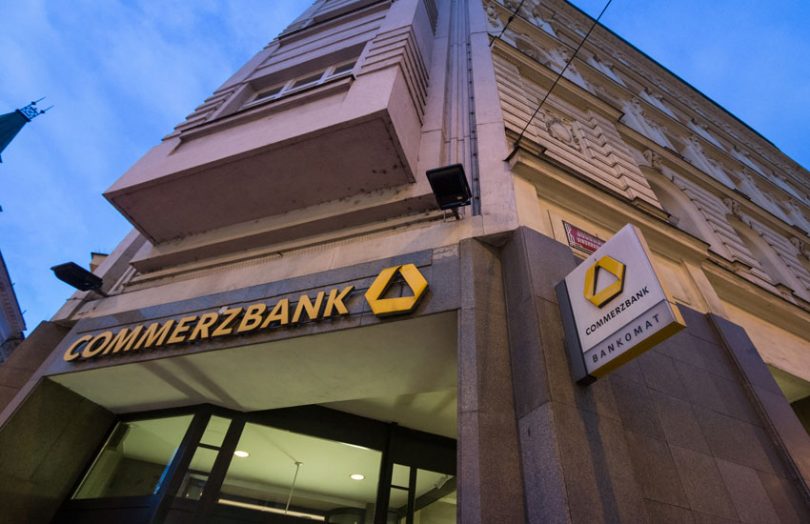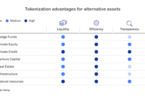In an interview yesterday, Sebastian Kraft, Senior Product Owner of Commerzbank’s blockchain and DLT activities, spoke about the need to have tokenized cash on ledger to unlock the benefits of blockchain technology. “Either you need fungible tokenized commercial bank money, or maybe even central bank money, which is currently in discussion. In the meantime, a working solution that bridges blockchain networks with traditional payment systems could help,” said Kraft.
Many business blockchain activities involve payment, whether that’s settling an invoice, trade finance, or purchasing a financial asset. Linking out to conventional payment systems introduces the risk of failed payment and reduces the efficiency advantages that blockchain offers. Hence the desire to use tokenized cash.
The Commerzbank executive emphasized the need for fungibility and interchangeability. Two examples of banks that have disclosed tokenized commercial bank money are JP Morgan and Russia’s Sberbank. The challenge is the money is still siloed and can only be sent to other organizations that hold accounts at the same bank.
Based on conversations, a little speculation, and confirmation from other sources, it seems a new blockchain payment system is under discussion. This would involve tokenized cash from one bank being interchangeable with another bank’s tokens. Commerzbank is already a participant in Fnality, a consortium of banks looking to create a common settlement token using central bank money. What’s discussed here is a separate initiative for commercial bank money.
JP Morgan has a project for interbank tokenized payments
JP Morgan grabbed headlines for its JPM Coin, which tokenizes JP Morgan bank account balances. However, JP Morgan is extending the JPM Coin technology to be used for a multi-currency interbank settlement system in Singapore, in association with DBS Bank and Temasek. That platform uses Ethereum-based technology, as does Fnality.
R3, with its massive banking client base and enterprise blockchain Corda would be in pole position to orchestrate a similar system. And Commerzbank has a close relationship with R3. We’ve reached out to R3 on the topic but did not receive a response in time for publication.
Ivno, a fintech working with R3 and many banks, confirmed it has tokenization software in its portfolio. The software enables banks and financial institutions to tokenize cash on Corda, with APIs to connect with tokens issued by banks using different blockchain technologies. However, Ledger Insights does not believe Commerzbank is using its solution.
The importance of fungibility
So what is this “fungible tokenized commercial bank money” that Kraft referred to? Previous pilots by Commerzbank have used on-chain money. What’s the difference?
Unlike what’s under discussion, the pilot money was issued according to the e-money regulatory regime.
E-money on blockchain works like this, “I give someone a euro and they issue a token as a prepaid bearer instrument against this. The euro then is usually put into a segregated account,” said Kraft.
“You need something that is really fungible, like how the payment system works today. Today it’s working like I’m sending you money and your bank and my bank are clearing it overnight in central bank money.”
Kraft continued, “We need something that I call tokenized commercial bank money, but not in this account-based form as we have it today, but in tokenized programmable form.”
Putting him on the spot
Given Kraft’s comments, I asked a direct question: “You’re a member of Fnality. Outside of Fnality, are you having discussions with other banks for the equivalent of a CommerzCoin and how a CommerzCoin could be exchanged for say a DeutscheCoin?”
He responded, “For certain use cases it makes sense to have a payment on ledger which can be used amongst different banks.” He continued that a typical question from clients is, “Now you have a solution built here, but everyone who uses it has to be a customer of Commerzbank. But some of my business partners are customers of another bank. How can they become part of it?”
Kraft added, “Of course, the banks here in Germany are in regular discussions, including with regards to payments on blockchain, to improve services to our customers.”
The Commerzbank executive referred to the European Central Bank (ECB) discussions and comments published in a couple of papers by the Association of German Banks, Bundesverband deutscher Banken (BdB).
The German Banking Industry Committee (DK) recently published a paper responding to the ECB’s digital euro consultation. The document includes the following:
“The ECB should remember that a digital euro in the form of central bank money should exist alongside a digital euro issued privately by European banks under the Markets in Crypto-Assets (MICA) Regulation. This would be issued in order to respond to certain bespoke and constantly changing requirements from the economy/the Industrial Internet of Things (e.g. smart contracts, programmability). Clarification is needed about the extent to which a digital euro issued by banks is covered by the crypto-assets described in the MICA Regulation, so that the intermediaries subject to supervision can efficiently integrate various types of digital money into digital payment solutions (e.g. digital wallets).”
That confirms bank coin issuance but not necessarily interoperability. If you have multiple bank coins, how can you make them interchangeable? The answer is standards.
Later in the same paper, there’s a call for such standards: “To enable token-based commercial bank money (with some of it held as a reserve at the central bank), uniform standards are also needed for the tokens representing the digital euro. The DK believes that responsibility for defining these standards lies with the ECB because this ensures European compatibility and security and these factors are crucial to acceptance of, and confidence in, the currency.”
Assuming there is such a multi-bank payment solution under discussion, it’s not ready quite yet. Hence there’s a need for an interim solution that Kraft referred to initially. Two weeks ago, the Deutsche Bundesbank unveiled a bridge solution called Blockbaster (not a typo). It used a trigger mechanism to initiate a payment on the conventional settlement system. Specifically, it enabled atomic securities transactions by executing a payment on the TARGET2 real-time gross settlement system (RTGS).
But the big question is when we can expect to see a fungible commercial bank money solution? Ivno CEO Aaron Grantham told Ledger Insights that he’d “be surprised if it didn’t happen this year,” even if it’s just a first step. And it’s not technology that’s holding it back.







